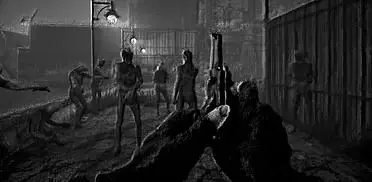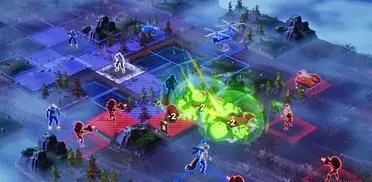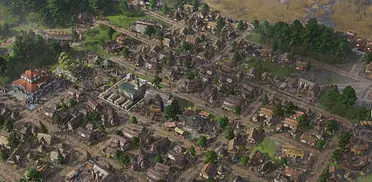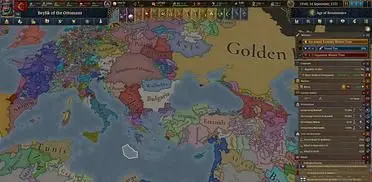Following a major delay and a cancelled beta test, Warhammer 40,000: Space Marine 2 is finally here. As we reported back in May with an extensive interview, publisher Focus Entertainment and developer Saber Interactive seemed quite sure they had a major win in their hands with this one, but of course, expectations were ridiculously high after more than a decade without a Space Marine sequel. Rest easy, brothers; Saber has delivered a staggering love letter to the WH40K universe with this one.
Back when the Relic Entertainment-developed classic came out, the formula already felt ambitious despite its gameplay’s simplicity: Space Marine was equal parts third-person shooter and hack-n-slash, and it had a big focus on putting a surprising (given the target hardware) number of enemies on the screen. More than ten years later, Space Marine 2 might come across as old-school and perhaps even dated to some people, but that turned out to be its biggest strength.
Saber Interactive always came across as a logical, safe pick to create a bigger and bolder sequel to Space Marine; its games based on IPs have largely been a success (some of them, like the World War Z titles, were rather big surprises), and slowly but steadily, its teams have built up a reputation of being reliable developers that can straight-up deliver. Space Marine 2, even as a concept, never asked for a massive rework of its DNA, just a sensible upgrade, and that’s exactly what the final product feels like.
Warhammer 40,000 fans are hard to please, and creative director Oliver Hollis-Leick told us the only group of people that were even more protective of the IP was Games Workshop itself. Looking at what the team has achieved with Space Marine 2, I can confidently say most WH40K fans and TPS/hack-n-slash enjoyers should walk away from this one with a big smile on their faces. Even as someone who is only ankle-deep into WH40K lore, Space Marine 2 is easily one of my favourite gaming experiences of the year and the most fun I’ve had brutalizing hordes of enemies since Doom Eternal.
The story picks up quite a while after the original game (natural longevity is a non-issue for the Adeptus Astartes), with Titus still under suspicion of heresy after the closing events of the first game and in a surprising position that feels like a chance to redeem himself in the eyes of the Ultramarines Chapter. By and large, Space Marine 2 straightforwardly deals with redemption and brotherhood (we’re not here for an intricate nor deep narrative), but there are some surprising character beats and plot twists that add more flavour to the whole than I was anticipating. I’d also like to point out that, while Tyranids are the enemies at the beginning of the game, you should expect surprises, since Focus and Saber have played their cards very well with the marketing materials.
Perhaps the boldest swing when it comes to the overall narrative comes from the odd decision to ‘break up’ the story in more distinct missions that are started from a main hub of operations aboard one capital ship. This allows the co-op Operations (which can also be played solo) to shine as extensions of the main story, as they complete the whole and offer different perspectives on the same conflict, but it also disrupts the pace quite a bit. With the exception of the final act, Space Marine 2 is constantly dropping players (you can also co-op through the entire main campaign) into missions and taking them back to the hub to deliver quieter moments of character development and exposition dumps.
Every mode is launched from this hub, and while it’s nice to walk around the lively ship and get some extra cool screenshot opportunities (the photo mode is really nice), it can get old quickly if you’re looking to blast through the story first and focus on everything else later. Here, we also get the opportunity to customize and unlock new abilities and progression nodes for each class and weapon available for the Operations and Eternal War (PvP) modes: Tactical, Assault, Vanguard, Bulwark, Sniper, and Heavy.
In practice, the classes are well-defined and inject much-needed variety into the core gameplay loop of murdering dozens of enemies and completing never-too-complex objectives. Moreover, there are plenty of nifty upgrades and customization options to grind towards, plus the progression system is uncomplicated and rewarding in a way that’s been forgotten nowadays. Space Marine 2 feels like a PS3/360-era Uncharted or Gears of War release; a fully-featured package that isn’t bloated, but offers variety and plenty of unlocks that are obtained without battle passes and whatnot.
Another big reason why Space Marine 2 comes together so nicely is that it understands how important it is to sell the whole experience to nail moment-to-moment combat and the ‘big-budget spectacle’ factor. The Adeptus Astartes feel awesome to control and like true forces of destruction; guns feel punchy and weighty, the movement has a gravity to it, and melee combat is utterly brutal, especially when it flows perfectly from one parry or counter to an execution and so on. Saber’s Swarm Engine is what tops the whole thing and what elevates Space Marine 2 over its predecessor. More than a few times, what I thought was an animated background quickly turned into a very tangible onslaught of enemies that started pouring into the actual level. It’s jaw-dropping stuff from the get-go and one of the biggest tech/game design flexes I’ve seen this generation so far.
We were expecting to get tons of bloody carnage from this game, and the devs fully knew they had to play to their strengths with it. The more chaotic a mission becomes, the better Space Marine 2 is. Luckily, downtimes are few and far between. At times, it makes some of Gears of War’s most intense missions feel like a walk in the park. Also, you’ll be fighting not to be downed (you’ve got two opportunities to be revived, then you’re gone for good) by desperately looking for enemies to execute more often than not. Space Marine 2’s combat loop rewards aggression over playing defence, and even the protection-oriented sections of some missions demand that you get in the middle of fights instead of playing turtle in the back with a stalker bolter or another long-range weapon for too long. The crunchy sound design and excellent original soundtrack by Nima Fakhara and Steve Molitz only round the presentation out.
Beyond the classes and extensive progression and rewards, Operations’ main difference from the campaign is that missions are much more brutal. Even on the lowest difficulty level (each one is recommended depending on your class level), failing despite your squad’s best efforts is noticeably easier than when playing as Titus and his main bros. Upgrade your gear and you’ll soon be able to jump into higher tiers, where things get more dire as the number of enemies grows and both equipment and ammunition reloads become scarcer. Six operations (more are coming later for free) might not seem like a lot, but I found them to be highly replayable and high-quality, especially as they feel like essential bits of the larger narrative. I only wish we had more control over parties and the ability to join missions that haven’t started yet without rolling a dice, but I can see those issues being ironed out sooner rather than later.
PvP is actually the part of the game that works on a smaller scale, with three 12-player modes – Annihilation (TDM), Seize Ground (Domination), and Capture & Control – as the offering at launch. Equipment/weapon/perk progression is separate from the co-op side of the game, but customization options are thankfully shared. I’ve only been able to play a handful of matches during the review period (it’s truly hard to get a lobby going with only press members matchmaking in and out), but it felt like a notably solid riff on everything that worked in the original game, except it has all the extra bells and whistles (and polish) that come with the other chunks of the game. Whether Eternal War has legs, in the long run, remains to be seen, but I’d personally love to see something so genuinely uncomplicated and honest thrive, and crossplay should help its case.
Last but not least, the overall performance on PC is another positive surprise: Space Marine 2 puts a lot on the screen and can get incredibly chaotic while looking cutting-edge, yet my 4070Ti plus 7800X3D build never dropped below the high 60s on Ultra settings at 1440p when using DLSS set to Quality, with the average framerate sitting around the 100-110 area. It’s an especially impressive outcome when you consider the raw complexity of most scenarios in the game plus the fact it’s not using the latest versions of Nvidia nor AMD’s image reconstruction solutions (and that also means there are no frame generation options for now). Rare traversal stutters aside, it’s an impressively smooth experience that will only get better as it receives DLSS3 and other improvements, but it also made me wonder several times how PS5 and Xbox Series X will behave during the most taxing sections of the game (which aren’t found early on).
WARHAMMER 40,000: SPACE MARINE 2 VERDICT
Space Marine 2 is an old-fashioned triumph that eschews modern trends and vapid bloat in exchange for relentless, gory action and a fully-featured Warhammer 40K package that’s presented in gorgeous fashion.
TOP GAME MOMENT
Coming back from the brink of death with a streak of parries and executions.
Good vs Bad
- Weighty animation work and crunchy sound design
- The Warhammer 40K universe has never looked better
- The moment-to-moment gameplay feels great despite its simplicity
- Saber’s Swarm Engine constantly produces jaw-dropping set pieces
- The main narrative doesn’t overstay its welcome and elevates the Operations
- Unexpected character beats and fan-service moments feel genuine and earned
- Operations are truly challenging and feel like ‘quality over quantity’
- Straightforward, old-school progression and customization systems
- The story campaign’s pace is disrupted by obligatory trips to the main hub
- Online play (currently) lacks basic party/match features and can be unreliable











